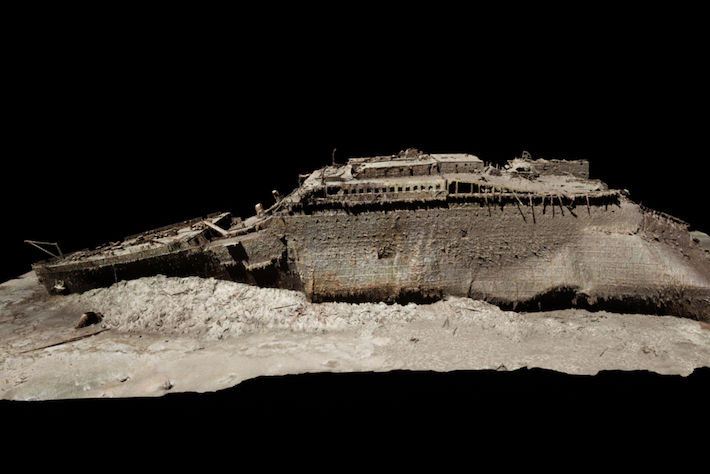 SAN DIMAS, CALIFORNIA—Submersibles named “Romeo” and “Juliet” were used to gather more than 715,000 sonar images and 4K video footage to create a full-scall digital 3-D model of RMS Titanic, according to a Live Science report. More than 1,500 of the 2,240 passengers and crew died when the liner struck an iceberg and sank in the North Atlantic on April 15, 1912. The shipwreck, discovered in 1985, rests under 12,500 feet of water some 370 nautical miles south of Newfoundland. Although previous salvage expeditions accidentally damaged the site, deep-sea microbes continue to weaken the structure, making the new digital record vital to future study of the disaster. Gerhard Seiffert, who is a 3-D imaging specialist for the deep-sea mapping company Magellan, worked with the filmmakers of Atlantic Productions to create the model. He explained that the new model will allow viewers and researchers to examine the ship down to its individual rivets and the three-mile debris field that surrounds it. To read about the wreck of a ship that sent a final warning to Titanic, go to "An Undersea Battlefield."
SAN DIMAS, CALIFORNIA—Submersibles named “Romeo” and “Juliet” were used to gather more than 715,000 sonar images and 4K video footage to create a full-scall digital 3-D model of RMS Titanic, according to a Live Science report. More than 1,500 of the 2,240 passengers and crew died when the liner struck an iceberg and sank in the North Atlantic on April 15, 1912. The shipwreck, discovered in 1985, rests under 12,500 feet of water some 370 nautical miles south of Newfoundland. Although previous salvage expeditions accidentally damaged the site, deep-sea microbes continue to weaken the structure, making the new digital record vital to future study of the disaster. Gerhard Seiffert, who is a 3-D imaging specialist for the deep-sea mapping company Magellan, worked with the filmmakers of Atlantic Productions to create the model. He explained that the new model will allow viewers and researchers to examine the ship down to its individual rivets and the three-mile debris field that surrounds it. To read about the wreck of a ship that sent a final warning to Titanic, go to "An Undersea Battlefield."
3-D Digital Model of RMS Titanic Created
